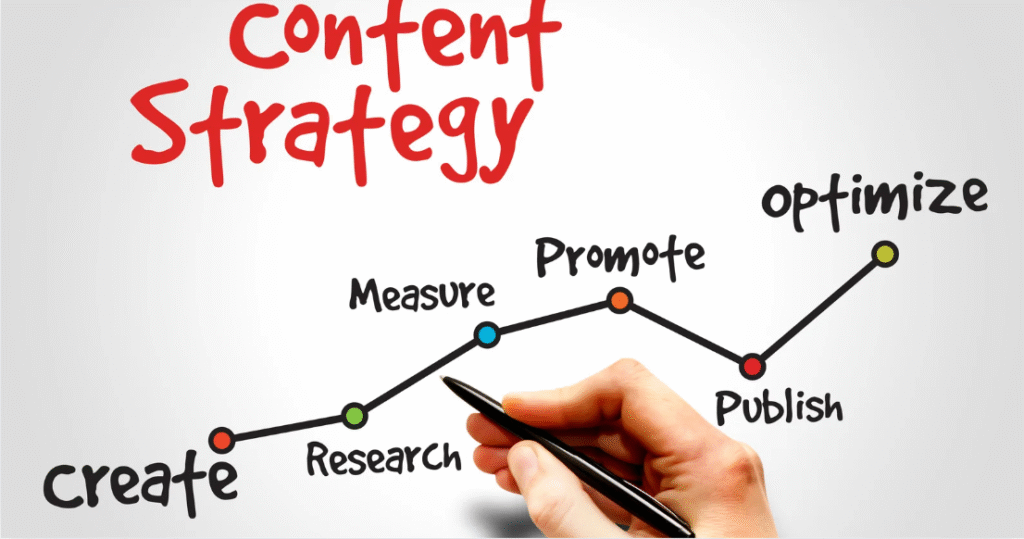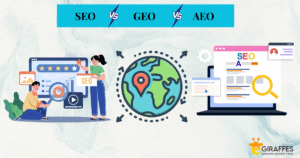A Beginner-Friendly Guide to Using Content to Grow Trust, Traffic, and Sales

Let’s be honest—getting people’s attention these days? It’s no walk in the park. We scroll past ads, skip commercials, and tune out anything that feels like a hard sell. So, how do you, as a business, stand out without being pushy?
That’s where Content Marketing comes in.
In today’s digital-first landscape, you’re not just competing on price or product. You’re competing to be seen, heard, and trusted. Content Marketing is what bridges the gap between what your audience needs and what your business offers. And the best part? You don’t need a massive budget to make it work.
Let’s dive into the basics—what Content Marketing really means, why it’s so powerful, and how any business, no matter the size, can start using it right now.
What is Content Marketing?
Think of Content Marketing as offering something helpful before asking for anything in return.
It’s the art and science of creating content—blogs, videos, social media posts, newsletters, podcasts, you name it—that provides value to your audience. Instead of constantly promoting your product or service, you create content that educates, entertains, or solves a problem your potential customer cares about.
In simple terms, it’s marketing… but without the “sell-sell-sell” vibe.
So whether it’s a quick tip on Instagram, a detailed how-to blog, a downloadable checklist, or a short explainer video, if it’s useful, targeted, and made with intention, you’re already doing Content Marketing.
Why Content Marketing Matters
Let’s talk about the real reason Content Marketing is getting so much attention—it works. Not in a flash-in-the-pan kind of way, but in a slow-build, long-term, relationship-building kind of way.
It Builds Trust
People don’t want to be sold to—they want to be helped. When you consistently provide helpful, relevant content, your audience begins to see you as a reliable resource. And people buy from businesses they trust.
It Boosts Your SEO
Search engines love fresh content that answers real questions. Each blog post, FAQ page, or resource you publish can help your site climb up those Google rankings and bring in organic traffic over time.
It Drives Traffic Without Ads
Good content lives forever on the internet. A strong blog post or video can keep bringing in visitors for weeks, months, or even years—without you having to pay for every click.
It Supports Your Other Channels
Whether it’s email marketing, social media, or even paid campaigns—content feeds them all. It’s the fuel that makes every other marketing engine run smoother.
It Delivers Long-Term ROI
Paid ads stop working the second you stop paying. But a well-written guide or an evergreen video? That can generate leads over and over again.
Types of Content You Can Use
Here’s the cool part—you don’t have to do all the things. Choose the types of content that fit your brand, your audience, and your resources.
Blog Posts
Still one of the most powerful tools in Content Marketing. Use them to explain, educate, tell stories, or answer questions. Great for building authority and improving SEO.
Videos
Short, long, animated, or off-the-cuff—videos are great for showing how something works, introducing your team, or telling customer stories.
Infographics
Got stats or processes that are hard to explain? A clean visual format can make complex info super digestible.
Podcasts
If your audience likes learning on the go, podcasts can help you build deeper connections and position yourself as a thought leader.
Email Newsletters
These are your direct line to people who already care about your brand. Use them to share tips, updates, and valuable links.
Social Media Posts
Quick insights, questions, behind-the-scenes peeks—they’re great for building a community and starting conversations.

How to Start Content Marketing (in 5 Simple Steps)
Getting started doesn’t have to be overwhelming. You don’t need a full content team. Just start small and build from there.
Step 1: Understand Your Audience
Before you write a single word, you need to know who you’re speaking to.
Ask yourself:
- Who’s my ideal customer?
- What’s stressing them out?
- What do they need help with?
- Where do they spend time online?
The clearer your picture, the easier it becomes to create content that actually resonates.
Step 2: Pick Clear Goals
What do you want this content to achieve? More traffic? Email signups? Phone calls?
Choose one or two goals per campaign or piece of content. That way, you can stay focused—and measure whether it’s working.
Step 3: Plan Your Content
Now it’s time to organize.
Decide:
- What topics to cover
- What format they’ll take (blog, video, carousel, etc.)
- Where you’ll publish them
- How often you’ll publish
You don’t need a fancy system. A simple Google Sheet, Trello board, or Notion page works just fine. The goal is to stay consistent and avoid scrambling at the last minute.
Step 4: Create Value-Driven Content
This is the heart of Content Marketing. You’re not writing for yourself—you’re writing to solve a problem, answer a question, or offer a fresh perspective.
Keep your content:
- Original: Don’t just rehash what everyone else is saying. Share your take.
- Useful: Help your reader solve a real-world issue.
- Clear: Use plain language. Avoid jargon.
- Well-structured: Use headers, bullets, visuals—make it easy to skim.
- Actionable: End with a clear call to action. Tell readers what to do next.
Step 5: Promote What You Create
The work isn’t done once you hit publish. Share your content everywhere your audience is:
- Post it on social media
- Include it in your newsletter
- Turn long blogs into short clips or quote graphics
- Turn tips into reels or LinkedIn posts
One piece of content can become five if you slice it creatively. That’s working smarter.
Content Marketing in Action: A Simple Example
Let’s say you run a small accounting firm.
Instead of running ads that scream “Hire us!” you start a content strategy. You launch a blog with posts like:
- “Top Tax Mistakes Small Business Owners Make”
- “How to Prep for Year-End Financial Reviews”
- “Small Business Tax Deadlines You Can’t Afford to Miss”
You share these articles on LinkedIn, include a short blurb in your monthly newsletter, and even post quick summaries as Instagram captions.
Each blog includes a gentle call to action—“Book a free 15-minute consult to see how we can help.”
What happens? People find your blog on Google. They start seeing your posts. They read something helpful and think, “This firm knows their stuff.”
That’s the long game of Content Marketing. You’re not selling—you’re serving. And that makes all the difference.
Common Content Marketing Mistakes to Watch Out For
Even the best intentions can go sideways. Here are a few common traps and how to avoid them.
- Inconsistency: Without a schedule, content gets pushed aside. Build a calendar and treat it like a real business priority.
- Only talking about yourself: Content should focus on your audience’s problems, not just your solutions.
- Ignoring SEO: Yes, write like a human—but don’t forget to include keywords naturally so search engines can find you.
- Skipping analytics: Use tools like Google Analytics or social media insights to track what’s working and what’s not.
- Expecting instant results: Content takes time to pay off. Stick with it.
Free Tools to Make Your Life Easier
No fancy agency? No problem. These tools help small businesses punch above their weight:
- Canva – Design clean social graphics and visuals
- Google Keyword Planner / Ubersuggest – Discover what people are searching for
- Grammarly – Polish your writing
- AnswerThePublic – Find real questions people are asking
- Notion / Trello – Stay organized with your content plan
- Mailchimp / Brevo – Send newsletters and build your email list
Start with what you have. You’ll learn and level up as you go.
Final Thoughts
Here’s the thing—Content Marketing isn’t about going viral. It’s about showing up. Day by day, post by post, video by video, you build trust. You answer questions. You become the business people remember.
You don’t need a marketing degree or a big budget. You just need to care about your audience and commit to being helpful. That’s it.
Start small. Pick one piece of content to create this week. Publish it. Share it. Learn from it. Then do it again.
Because your future customers? They’re already searching. It’s time for you to show up and be found.



